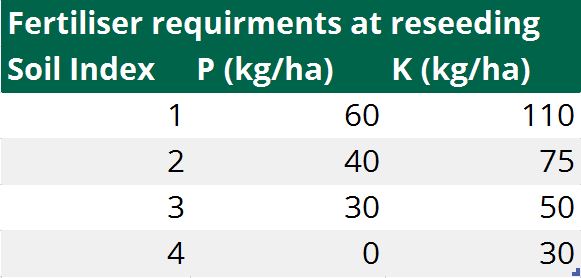Spring is the best time to reseed grassland on Irish farms, according to Germinal Seed’s Mary McEvoy, as the management of the reseeded sward is easier in the spring than the Autumn.
McEvoy, the Technical Development Manager with Germinal Seeds spoke about the important factors to consider when reseeding at a livestock seminar in Aughrim, Co. Wicklow recently.
“Generally 60% of reseeding is done in the spring, there is not issue with autumn seeding once the seed is in the ground on time.
“Autumn reseeding tends to suit the feed budget, as there is no area out for silage, but bear in mind that the soil temperatures are on the way down,” she said.
McEvoy also said that it can be difficult to graze autumn sown reseeds on some farms, as the soil conditions deteriorate.
And, the first grazing of any reseed is important to promote plant tillering, which is important for future grass growth.
She also said that it can be difficult to spray autumn reseeds for weeds with a post emergence spray and by the time the spray is applied in the following spring the weeds will have taken a hold in the sward.
“Spring presents much greater flexibility, as soil conditions are improving and temperatures are on the way up,” she said.
McEvoy told the 60 strong crowd in attendance that reseeding is one of the few investments made on farm that will give a return on investment within three years.
She said that by rising the perennial ryegrass of the sward from 40% to 100% the farmer could make €200 per hectare per year in extra profit.
Source: Teagasc – Grass production (February to October) in a sward containing 15% perennial ryegrass and 100% prg. Grazed grass is the cheapest source of energy available to Irish farmers to feed their stock, she said and increasing the perennial ryegrass content of the sward will improve animal performance and profitability, she said.
Silage is 2.7 times more expensive than grass. The cost of grazed grass is about 7c/kg of dry matter produced. The grass expert also said that reseeded swards produce more grass in the shoulders of the year and this is important for the profitability of both dairy and beef systems. “Each extra day at grass in the spring is worth €2.70/day for dairy farmers and €1.54/day for suckler farmers,” she said.
Along with improved animal performance, McEvoy also said that reseed swards tend to produce more grass and use Nitrogen fertiliser more efficiently than older swards.
Only one in 10 soils in Ireland are at the optimum nutrient levels for grass growth, she said, as 90% of Irish soils are low in pH, Phosphorous (P) or Potassium (K).
The P and K levels are critical to ensure establishment of the grass seedling, she said and swards which are low in P and K will not perform.
Soil fertility is critical to the establishment, performance and persistency of perennial ryegrass, so if you don’t get your soil right you are basically wasting your money. McEvoy also said that the pH of the soil also has to be considered when reseeding and farmers should target a pH of 6.2-6.5, as below these levels weed grasses will out-perform the perennial ryegrass seedling.
McEvoy said that farmers should only use grass varieties that are on the recommended list or on the Teagasc Pasture Profit Index (PPI).
“The pasture profit index determines the key economic traits of grass varieties,” she said.
Key traits from the Pasture Profit Index:
“Quality is a hugely important trait for animal intake and it is something farmers should focus on when selecting grass mixtures,” she said.
Another important factor to consider is persistency, she said, but the biggest driver of this is soil fertility and grazing management.
Why should farmers reseed?

Soil fertility

Teagasc advice on nutrient requirements at reseeding:

Selecting a grass variety
